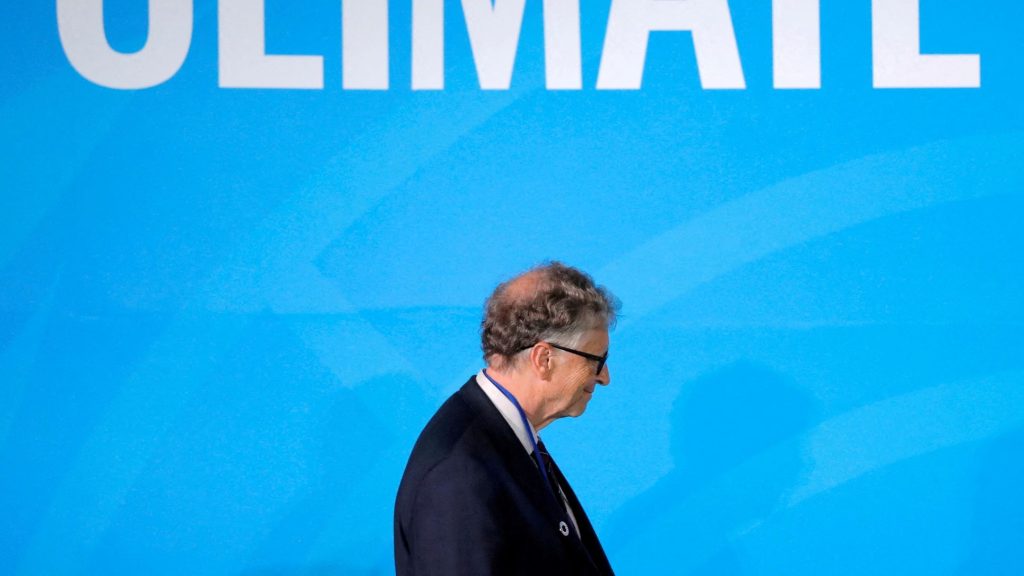Bill Gates Upbeat On Climate Innovation, Even If 1.5C Goal Out Of Reach

When it comes to climate change, Bill Gates considers himself a realist – even if that means admitting the world has no chance limiting warming to 1.5 degrees Celsius.
Given “the overall scale of our industrial economy … we’re going to have to do mind-blowing work to stay below 2 degrees,” he said.
But on meeting the Paris Agreement’s 1.5C goal? No one wants to be “the first to say it,” but the math shows it’s no longer within reach, Gates said in a video interview with Reuters.
The software-developer-turned-philanthropist was nevertheless upbeat about climate innovation – ticking off numerous areas advancing low-carbon technologies with funding from the Breakthrough Energy Group, which Gates founded in 2015.
Gates has invested more than $2 billion toward climate technologies, including direct air capture, solar energy and nuclear fission. The 14-year-old fission company under the Breakthrough umbrella, TerraPower, aims to have a demo reactor running by 2030.
These things take time, said Gates, co-founder of Microsoft Corp.
Gates spoke with Reuters ahead of the release of his annual letter – reflecting on 2022 and describing what he’s most excited about in the year ahead.
He transferred $20 billion of his funds to the Gates Foundation’s endowment, which plans to increase philanthropic spending on public health and education from $6 billion to $9 billion in coming years.
He also praised Warren Buffett for his contribution, which Gates said totaled $45 billion since 2006, counting Berkshire Hathaway stock appreciation.
Breakthrough Energy, however, operates separately from the Gates Foundation charity. In his letter to shareholders, Gates explains that the climate problem is too enormous for philanthropy alone to tackle.
“There’s not enough money, and so you have to have some innovation,” he told Reuters. “The idea that it can be done by brute force, there’s just no chance.”
Companies need investment and technical support to prove their low-carbon ideas beyond the pilot phase – and then to scale up manufacturing, he says. But any Breakthrough Energy profits are funneled back into the group or to the foundation.
Some of the companies under Breakthrough that are developing Direct Air Capture (DAC) – technology designed to pull CO2 straight from the atmosphere – have their sights set on some $3.5 billion in newly announced U.S. contracts to build DAC plants and fund research grants.
“We have a number of Direct Air Capture companies that will bid on being a part of those projects,” he said, noting that the recent Inflation Reduction Act legislation has boosted prospects for climate innovation. He did not elaborate on the DAC companies’ plans.
In manufacturing, the steel and cement industries have made “fantastic” progress, he said, a change from his worries about that sector just two years ago.
Manufacturing is responsible for about a third of global climate-warming emissions.
Now, “there’s no area of climate mitigation that I feel like ‘Oh, that’s really completely uncovered,'” he said.
Instead, with the world set to push past 1.5C of warming, he said the challenge is shifting toward helping people adapt to a harsher, hotter future.
“In addition to mitigation, which will still be the biggest part (of Breakthrough Energy’s investment), we’ll also fund adaptation-related work.” That could include technology to help control forest fires, using coral reef type structures to create barriers to flooding, or development of crop strains that can withstand drought.
(Reporting by Katy Daigle; Editing by Lisa Shumaker)




